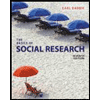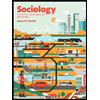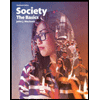SWK5014 [u10a1] Unit 10 Assignment 1
docx
keyboard_arrow_up
School
Capella University *
*We aren’t endorsed by this school
Course
5014
Subject
Sociology
Date
Apr 28, 2024
Type
docx
Pages
14
Uploaded by DoctorWater38939
Campbell Family Case Angelique Vasquez
School of Social Work, Capella University SWK5014: Advanced Generalist Social Work Practice
Professor Brian Roland
March, 2024
1
Campbell Family Case Identifying Information
In this section I will be describing pertinent information about the client, Kali Campbell. Kali is a 17-year-old mixed race teenager who presents as quiet, agitated, and disengaged (Campbell Family Case Study). Kali has been arrested twice for drug use and possession of marjuana, is on probation, and says she is bisexual and in love with her current girlfriend who is 19 years old. (Campbell Family Case Study). Kali has never had an official diagnosis, however was referred to counseling for depression by her school counselor and probation officer (Campbell Family Case Study). Kali reports no desire to find a job, go to school, or obtain her GED (Campbell Family Case Study). Kali has expressed interest in possibly becoming a hairdresser in the future and leaving her home as soon as she turns 18. My rationale for selecting Kali Campbell is due to my current work profession, my current caseload are troubled teens ages
14 to 21 who may be dealing with depression, anxiety, bullying and some are part of the LGBT community. Working with Kali Campbell, exploring assessments, determining SMART goals and interventions can be carried out to my direct practice. Presenting Problem
This section is to identify the client’s primary problem(s), the factors that led them to seek treatment, and whether or not she is a voluntary client or being compelled to treatment by another person or outside agency. Joe Campbell, Kali’s father, states he believes Kali is depressed but will not talk about, he reports Kali had stated to him she is not a mess like her mom and if she was depressed she would be like her “a stupid mess who does nothing but drink and sleep” (Campbell Family Case Study). As mentioned in the identifying information, Kali has
2
never had an official diagnosis, however was referred to counseling for depression by her school counselor and probation officer (Campbell Family Case Study). Kali has violated her probation by testing positive for marjuana, her father believes she is depressed and he believes that the reason she refuses to go back to school is due to being bullied for being bisexual. These factors are all included in leading the family to seek treatment for Kali. Kali is being compelled to treatment by her father, school counselor and probation officer.
Other Assessments
In this section I will describe the process I will use to complete a clinical assessment for this client, including any other assessments that I feel are pertinent. Using the DSM-5 Self-Rated
Level 1 Cross-Cutting Symptom Measure-Child Age 11-17, these questions will ask about things
that might have bothered the client and she will circle the number that best describes how much or how often it has been bothering her by each problem during the past two weeks (American Psychiatric Association). “This child-rated version of the measure consists of 25 questions that assess 12 psychiatric domains, including depression, anger, irritability, mania, anxiety, somatic symptoms, inattention, suicidal ideation/attempt, psychosis, sleep disturbance, repetitive thoughts and behaviors, and substance use. Each item asks the child, age 11–17, to rate how much (or how often) he or she has been bothered by the specific symptom during the past 2 weeks. The measure was found to be clinically useful and had good test-retest reliability in the DSM-5 Field Trials conducted in pediatric clinical samples across the United States” (American Psychiatric Association). Additional assessments would be pertinent as a follow-up due to a rating of mild or greater within two domains on the 5-point scale. The follow-up assessments include “Level 2-Depression-Child Age 11-17 (PROMIS Emotional Distress-Depression-
Pediatric Item Bank)” and “LEVEL 2—Anger—Child Age 11–17 (PROMIS Emotional Distress
Your preview ends here
Eager to read complete document? Join bartleby learn and gain access to the full version
- Access to all documents
- Unlimited textbook solutions
- 24/7 expert homework help
3
—Calibrated Anger Measure—Pediatric)” as well as “LEVEL 2—Substance Use—Child Age 11–17 (adapted from the NIDA-modified ASSIST)”. “The DSM-5-TR Level 2—Depression—
Child Age 11–17 measure is the 14-item PROMIS Depression Short Form that assesses the pure domain of depression in children and adolescents. The PROMIS Depression scale was developed
for and can be used with children ages 8–17; however, it was tested only in children ages 11–17 in the DSM-5 Field Trials. The measure is completed by the child prior to a visit with the clinician” (American Psychiatric Association). “The DSM-5-TR Level 2—Anger—Child Age 11–17 measure is the 6-item PROMIS Calibrated Anger Measure that assesses the pure domain of anger in children and adolescents. The PROMIS Calibrated Anger Measure was developed for
and can be used with children ages 8–17. The measure is completed by the child prior to a visit with the clinician” (American Psychiatric Association). “The DSM-5-TR Level 2—Substance Use—Child Age 11–17 is an adapted version of the NIDA-Modified ASSIST. The 15-item measure is used to assess the pure domain of alcohol, tobacco/nicotine, prescription medicine, and illicit substance use in children and adolescents. It is completed by the child prior to a visit with the clinician” (American Psychiatric Association). The process utilized to assess the needs of Kali Campbell is utilizing DSM-5 assessment based on self reported answers. The rationale for the proposed process is that self-assessment prompts the skills of reflective practice and self-
monitoring, develops self-directed learning and increases motivation (
Cornell University, 2024). Communication with other professionals will be the school guidance counselor and the probation
officer as it will help with the intervention for Kali.
SMART Goals
In this section I will be identifying three short-term SMART goals that will develop in cooperation with the client. SMART goals are statements of the important results you are
4
working to accomplish and are designed in a way to foster a clear and mutual understanding of what constitutes expected levels of performance and successful professional development (University of California, 2016). The rationale for each of the following goals is to assist the client with developing coping skills for her depression, anger and build a support system within her family for the client. ●
Specific: The client will meet with the clinician for therapy sessions once a week for at least the next two months to discuss substance use, help manage depression symptoms, and anger, and identify/develop coping skills. ○
Measurable: The client and clinician will determine personal growth and changes to mental health over the next two months by reusing previously used assessments. ○
Achievable: This goal is achievable for the client to meet with the clinician once a
week for the next two months based on the client’s availability.
○
Relevant: This goal is relevant as seeking professional help helps boost mental health for a client who is suffering from depression, anger, and substance abuse. ○
Time-Bound: This goal is time-bound by meeting once a week for two months.
●
Specific: The client will talk to at least one person in her family (Mother, Father, or brother) once a week for the next 6 weeks to discuss events and feelings of the past week that the client has been dealing with.
○
Measurable: This goal is measurable by the client and family member’s relationship growing into a trusted person in the client’s support system. ○
Achievable: This goal is achievable as the client decides on the trusted person she wishes to speak with that week.
5
○
Relevant: This goal is relevant because it’s easy for the client to feel she can not speak freely or have a connection with someone in her support system other than her girlfriend.
○
Time-Bound: The goal is time-bound because it specifies a 6-week time period, once a week. ●
Specific: The client will recognize and journal symptoms of depression or anger experienced on that day for at least 15 minutes every day for 4 weeks. ○
Measurable: This goal is measured by holding a 15-minute journaling time each day for the next four weeks. ○
Achievable: This goal is achievable due to the short time increments and the client can freely express herself in the journal
○
Relevant: This goal is relevant as it will help the client become self-aware of symptoms and how they interfere with her everyday life
○
Time-Bound: This goal will be completed in four weeks.
Treatment Plan Intervention
This section is to create an annotated bibliography including five scholarly resources related to possible interventions for the client, then to identify intervention method or therapeutic
theory based in the annotated bibliography, that is most applicable to the client. The first annotated bibliography, Why Cognitive Behavioral Therapy Is the Current Gold Standard of Psychotherapy
, explains Cognitive Behavioral Therapy (CBT) and argues it is the “goal-
standard” psychological treatment. The authors provided the following reasons: “(1) it is the most researched form of psychotherapy; (2) nothing has been seen as superior to CBT; (3) CBT is in line with the current paradigms of human psyche and behavior” (David et al., 2018). The
Your preview ends here
Eager to read complete document? Join bartleby learn and gain access to the full version
- Access to all documents
- Unlimited textbook solutions
- 24/7 expert homework help
6
second annotated bibliography, Long-term effectiveness of cognitive behavioral therapy for youth with anxiety disorders
, indicates that CBT has demonstrated positive long-term results among youth with anxiety disorders (Kodal et al., 2017). The third annotated bibliography, Interpersonal therapy for mental health problems: A comprehensive meta-analysis
, discovers Interpersonal Therapy’s effectiveness in the treatment of acute depression and “is equally effective in the prevention of new depressive disorders as well as in preventing relapse” (Cuijpers et al., 2016). The fourth annotated bibliography, The Effectiveness of psychodynamic psychotherapies: An Update,
shared the findings of Psychodynamic Therapy (PDT), “(1) it is beneficial to individuals who are in depression to in some forms of anxiety as well as other somatic diseases; (2) its apparent superiority is attributed to prolonged contact between the patient and the therapist” (Fonagy, 2015). The final annotated bibliography, Effectiveness of blended depression treatment for adults in specialized mental healthcare: a study protocol for randomized controlled trial
, research indicates that internet-based interventions are a potential strategy that can be used to improve high-quality treatments of patients with depression (Kemmeren et al., 2016).
To encourage the client to continue treatment, I can discuss cognitive behavioral therapy. Authors of, Embracing the contribution of both behavioral and cognitive theories to cognitive behavioral therapy: Maximizing the richness, supports the CBT intervention for this client and her family, and has been utilized with several other therapies or by itself in treating PTSD, depression, eating disorders, and other mental health disorders (Early & Grady, 2017). The article explains how this form of therapy can help a person recognize inaccurate or negative thinking to a new perspective. CBT is a skill-based therapy that could assist the client with new strategies that assist with healthy ways of communication and thinking (Early & Grady, 2017).
7
As the social worker for this client, I can use technology as an aid to engage the client such as e-
therapy and online counseling platforms to provide support and intervention to the client remotely. Online counseling platforms are breaking down barriers of location and time.
Evaluating Client’s Progress
This section is to describe a plan to evaluate the effectiveness of the proposed intervention plan. “When planning a strategy to evaluate client progress, most clinicians use standardized assessment instruments or pre and posttests specific to the behaviors targeted in therapy. It is common practice, especially in educational settings, to use standardized instruments
to assess progress.” (Harris & Lougeay-Mottinger, 1987). I will evaluate the client's progress by having the client complete questionnaires that she had completed during our beginning stages so that her progress may be reviewed by herself and me together. “In determining the efficacy of services, clinicians need to evaluate client progress and program effectiveness” (Harris & Lougeay-Mottinger, 1987). I will utilize the evaluation method of Goal Attainment Scaling. “Goal attainment scaling (GAS) is a technique for demonstrating the extent to which goals have been achieved on a common scale. When used for individual students, GAS is used to evaluate the student's functional change after the intervention or for monitoring students' counseling progress” (Coffee & Ray-Subramanian, 2009). The objective of using evidence-based measures is to use a five-point system that scores the progress a client is making for a list of SMART goals. This will be used to monitor the client’s progress over the course of therapy in reaching the desired outcomes.
Legal and Ethical Considerations
8
The purpose of this section is to describe both legal and ethical ramifications related to the proposed intervention plan including steps taken to alleviate any potential complications. Self-determination has a major impact on the treatment process. As social workers we will face a
number of legal and ethical issues throughout our career. Part of our responsibilities is to maintain professional boundaries, develop awareness of value conflicts and difficult decisions regarding treatment issues (Miller, 2022). According to the National Association of Social Workers, “the primary mission of a social worker is to enhance human well-being and help meet basic human needs of all people, focused particularly on those living in poverty, people who face
oppression, and those who are vulnerable” (NASW, 2023). As a social worker, to manage my own biases and prejudices the first step would be to identify these factors and challenge them. By
embracing cultural humility, monitoring my emotions, and applying ethical principles I will be practicing strategies to manage my own biases and prejudices. Personal values are for our own selves to uncover in marking our identity while for professions, values are preselected and consciously chosen to guide a certain principle or principles. “Social workers must be attuned to their personal values and be aware of when those values mesh or clash with those espoused by the profession as a whole” (Hepworth & Rooney, 2016). It is the responsibility of the Social worker to know the difference between your personal and professional values and examine how personal values can create bias and create a stressful environment for the client. The article, Dissonance Between Personal and Professional Values: Resolution of an Ethical Dilemma, highlights that conflicts between personal and professional values are common in social work. The professional values and principles of social work do not differ between clients, “The social worker, who practices and lives the ethical standards of the profession, is compelled to apply these principles to practice with all clients'” (Comartin & Gonzalez, 2011). Personal values can
Your preview ends here
Eager to read complete document? Join bartleby learn and gain access to the full version
- Access to all documents
- Unlimited textbook solutions
- 24/7 expert homework help
9
create bias when working with a client. Self-determination allows the client to freely choose to start/continue treatment and can prevent the client from making certain changes that are necessary for the treatment process. “
Social workers respect and promote the right of clients to self-determination and assist clients in their efforts to identify and clarify their goals. Social workers may limit clients’ right to self-determination when, in the social workers’ professional judgment, clients’ actions or potential actions pose a serious, foreseeable, and imminent risk to themselves or others.” (NASW, 203). Cultural Considerations This section will describe considerations related to culture based on this case formulation and the client. This section will also describe how to advocate for the advancement of human rights for the issue based on the assessment of and considerations with this client. “
The lesbian, gay, bisexual, transgender, or queer/questioning (LGBTQ) community comprises a broad cross-
cultural range of community members. It includes all races, ethnic and religious backgrounds, and socioeconomic status. The healthcare needs of the LGBTQ community should be considered
to provide the best care and avoid inequalities of care” (Bass, 2023). It is part of the social workers’ responsibility to assist in meeting the needs of all people, advocate for what is right, and improve human well-being, especially those who are vulnerable, oppressed, or living in poverty (NASW, 2021). Culturally responsive engagement is “Understanding populations and framing problems is a professional undertaking that must be approached with care and sensitivity” (Netting et al., 2016). This can be achieved through advocacy in social work, it contributes to the reduction of difficulties in communities and the empowerment of individuals and the communities as a whole. The strategies of advocacy begin with professional and personal
development to maintain order effectiveness which is critical to maintaining cultural
10
competence. Social workers being able to advocate for their clients is essential to the strategy that will assist in providing resources in the community. The change effort in communities can begin with social workers as change agents (Netting et al, 2016). These strategies are about social change and about advocacy.
11
References
American Psychiatric Association. (n.d.). Online assessment measures. https://www.psychiatry.org/psychiatrists/practice/dsm/educational-resources/assessment-
measures
Bass, B. (2023, November 13). Cultural competence in the care of LGBTQ patients
. National Library of Medicine. https://www.ncbi.nlm.nih.gov/books/NBK563176/ Capella University. (2024b). Campbell Family Case Study
. https://www.capella.edu/ Coffee, G. & Ray-Subramanian, C. E. (2009). Goal attainment scaling: A progress-
monitoring tool for behavioral interventions. School Psychology Forum, 3
(1), 1-12. Retrieved from http://www.nasponline.org
Comartin, E. B., & González-Pre, A. (2011). Dissonance between professional personal values
. Dissonance Between Personal and Professional Values: Resolution of an Ethical Dilemma. https://jswve.org/download/2011-2/fall115-Dissonance-between-professional-
personal-values.pdf Cornell University. (2024). Self-assessment: Center for Teaching Innovation
. Self-
Assessment | Center for Teaching Innovation. https://teaching.cornell.edu/teaching-
resources/assessment-evaluation/self-assessment
Cuijpers, P., Donker, T., Weissman, M. Ravitz, P., and Cristea, I. (2016). Interpersonal therapy for mental health problems: A comprehensive meta-analysis
Your preview ends here
Eager to read complete document? Join bartleby learn and gain access to the full version
- Access to all documents
- Unlimited textbook solutions
- 24/7 expert homework help
12
David, D., Cristea, I., & Hofmann, S. G. (2018). Why Cognitive Behavioral Therapy Is the Current Gold Standard of Psychotherapy. Frontiers in psychiatry
, 9
, 4. https://doi.org/10.3389/fpsyt.2018.00004
Early, B. P., & Grady, M.D. (2017). Embracing the contribution of both behavioral and cognitive theories to cognitive behavioral therapy: Maximizing the richness. Clinical Social Work Journal, 45(1), 39-48
Harris, M. R., & Lougeay-Mottinger, J. (1987). Evaluating Client Progress and Program
Effectiveness: A Challenge
. Louisiana State University-Medical Center, New Orleans. https://leader.pubs.asha.org/doi/10.1044/leader.AE.13052008.28 Hepworth, D. H., & Rooney, R. H. (2016). Empowerment Series: Direct Social Work Practice: Theory and Skills (10th ed.). Cengage Limited. https://capella.vitalsource.com/books/9781337472838
Fonagy, P. (2015). The effectiveness of psychodynamic psychotherapies: An update. Retrieved from: https://www.ncbi.nlm.nih.gov/pmc/articles/PMC4471961/
Kemmeren, L., D. J. F. van Schaik
, Riper, H., A. M. Kleiboer
, J. E. Bosmans
, and J.H Smit (2016). Effectiveness of blended depression treatment for adults in specialized mental healthcare: a study protocol for randomized controlled trial. Retrieved from: https://www.ncbi.nlm.nih.gov/pmc/articles/PMC4839153/
Kodal, A., Fjermestad, K., Bjelland, I., Gjestad, R., & Haugland, B. S. M. (2017, November 26). Long-term effectiveness of cognitive behavioral therapy for youth with
13
anxiety disorders
. Journal of Anxiety Disorders. https://www.sciencedirect.com/science/article/pii/S0887618517304280?via%3Dihub Miller, A. (2022, January 4). Legal & ethical issues facing social workers
. Legal & Ethical Issues Facing Social Workers. https://work.chron.com/legal-ethical-issues-facing-
social-workers-21676.html NASW, National Association of Social Workers. (2023). Code of Ethics. https://www.socialworkers.org/About/Ethics/Code-of-Ethics Netting, F. E., Kettner, P. M., McMurtry, S. L., & Thomas, M. L. (2016). Social Work Macro Practice (6th ed.). Pearson Education (US). https://capella.vitalsource.com/books/9780133948578
University of California. (2016). Smart goals: A how to guide. https://www.ucop.edu/local-human-resources/_files/performance-appraisal/How to write SMART Goals v2.pdf
Related Documents
Recommended textbooks for you

Social Psychology (10th Edition)
Sociology
ISBN:9780134641287
Author:Elliot Aronson, Timothy D. Wilson, Robin M. Akert, Samuel R. Sommers
Publisher:Pearson College Div

Introduction to Sociology (Eleventh Edition)
Sociology
ISBN:9780393639407
Author:Deborah Carr, Anthony Giddens, Mitchell Duneier, Richard P. Appelbaum
Publisher:W. W. Norton & Company

The Basics of Social Research (MindTap Course Lis...
Sociology
ISBN:9781305503076
Author:Earl R. Babbie
Publisher:Cengage Learning

Criminalistics: An Introduction to Forensic Scien...
Sociology
ISBN:9780134477596
Author:Saferstein, Richard
Publisher:PEARSON

Sociology: A Down-to-Earth Approach (13th Edition)
Sociology
ISBN:9780134205571
Author:James M. Henslin
Publisher:PEARSON

Society: The Basics (14th Edition)
Sociology
ISBN:9780134206325
Author:John J. Macionis
Publisher:PEARSON
Recommended textbooks for you
 Social Psychology (10th Edition)SociologyISBN:9780134641287Author:Elliot Aronson, Timothy D. Wilson, Robin M. Akert, Samuel R. SommersPublisher:Pearson College Div
Social Psychology (10th Edition)SociologyISBN:9780134641287Author:Elliot Aronson, Timothy D. Wilson, Robin M. Akert, Samuel R. SommersPublisher:Pearson College Div Introduction to Sociology (Eleventh Edition)SociologyISBN:9780393639407Author:Deborah Carr, Anthony Giddens, Mitchell Duneier, Richard P. AppelbaumPublisher:W. W. Norton & Company
Introduction to Sociology (Eleventh Edition)SociologyISBN:9780393639407Author:Deborah Carr, Anthony Giddens, Mitchell Duneier, Richard P. AppelbaumPublisher:W. W. Norton & Company The Basics of Social Research (MindTap Course Lis...SociologyISBN:9781305503076Author:Earl R. BabbiePublisher:Cengage Learning
The Basics of Social Research (MindTap Course Lis...SociologyISBN:9781305503076Author:Earl R. BabbiePublisher:Cengage Learning Criminalistics: An Introduction to Forensic Scien...SociologyISBN:9780134477596Author:Saferstein, RichardPublisher:PEARSON
Criminalistics: An Introduction to Forensic Scien...SociologyISBN:9780134477596Author:Saferstein, RichardPublisher:PEARSON Sociology: A Down-to-Earth Approach (13th Edition)SociologyISBN:9780134205571Author:James M. HenslinPublisher:PEARSON
Sociology: A Down-to-Earth Approach (13th Edition)SociologyISBN:9780134205571Author:James M. HenslinPublisher:PEARSON Society: The Basics (14th Edition)SociologyISBN:9780134206325Author:John J. MacionisPublisher:PEARSON
Society: The Basics (14th Edition)SociologyISBN:9780134206325Author:John J. MacionisPublisher:PEARSON

Social Psychology (10th Edition)
Sociology
ISBN:9780134641287
Author:Elliot Aronson, Timothy D. Wilson, Robin M. Akert, Samuel R. Sommers
Publisher:Pearson College Div

Introduction to Sociology (Eleventh Edition)
Sociology
ISBN:9780393639407
Author:Deborah Carr, Anthony Giddens, Mitchell Duneier, Richard P. Appelbaum
Publisher:W. W. Norton & Company

The Basics of Social Research (MindTap Course Lis...
Sociology
ISBN:9781305503076
Author:Earl R. Babbie
Publisher:Cengage Learning

Criminalistics: An Introduction to Forensic Scien...
Sociology
ISBN:9780134477596
Author:Saferstein, Richard
Publisher:PEARSON

Sociology: A Down-to-Earth Approach (13th Edition)
Sociology
ISBN:9780134205571
Author:James M. Henslin
Publisher:PEARSON

Society: The Basics (14th Edition)
Sociology
ISBN:9780134206325
Author:John J. Macionis
Publisher:PEARSON